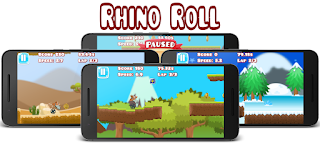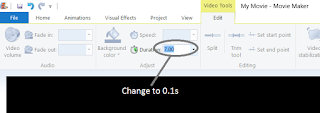In my
previous blog I thought to add a rhino to the game as a baddie.
So to recap, I had two versions, one as Rhino/Spacehopper hybrid the other as a proper animated version of a rhino.
This blog will follow my research into how to make the Rhino/Spacehopper hybrid.
Rhino face-off
So looking around in the Unity physics 2D I thought I'd start with the ball. In
Shuffa ball I have a script for the ball, a RigidBody2D and a circle collider 2D so I added the same.
Unity editor after adding Rhino script, RigidBody2D and Circle Collider 2D
Then in the script I add code to apply force to the rigidBody2D. This little snipit says if the velocity is less than 5 add I to the force, by putting it in the fixedUpdate as opposed to every frame it does it at a fixed time. If every frame, different machines have different frame rates.
Rhino script in VS2013 Community edition
Here I use
VS2013 Community edition, I tried MonoDevelop that comes with Unity, but found the Intellisense a bit flaky. Using Visual Studio at work everyday, I am too used to the Intellisense working and all of the keyboard shortcuts, so I changed to the VS2013 community edition.
Running the scene, everything worked as normal, then I wanted to add the Rhino head, this is where I went looking through various Physics 2D components.
The thing that seemed most obvious to me was the Wheel Join 2D, this seemed what I wanted. I connected my wheel joint 2D from the wheel to the head of my rhino, which seemed the obvious way but it really didn't work as I expected.
Then I found on the internet that you connect from the head to the the wheel, that was better but again didn't look right. So I added a small wheel at the front of the head. Then for movement you have a motor not the FixedUpdate function above.
It was OK but not the vision I had for my Rhino ball, it was more like a Rhino bike than a Rhino ball.
Click
here to see a video of the Rhino motor bike in action.
Rhino bike
Next I tried the Spring Join 2D, this is like car suspension. Added two to the head and then I stopped the head from rotating on the Z axis. This gave more of the effect I was after.
Rhino with 2 Sprint joint 2D















































